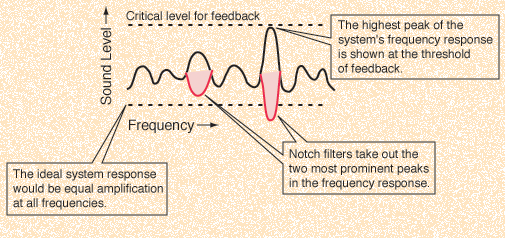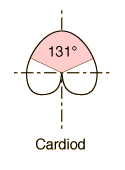Notch Filters
When a non-uniform frequency response of an amplification system/room combination causes the system to "ring" before giving adequate amplification, the potential acoustic gain can sometimes be improved with the use of notch filters to take out the offending frequencies as illustrated below. Shown is the use of two notch filters to discriminate against the two most prominent peaks in the frequency response.

Often several such tunable notch filters are packaged together and marketed as "feedback suppressors" . Sometimes such feedback suppressors are used to smooth out the roughest spots before undertaking a full-fledged equalization of the sound system.
|

